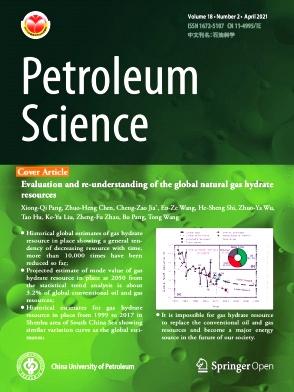Impact of dissolution and precipitation on pore structure in CO2 sequestration within tight sandstone reservoirs
IF 6
1区 工程技术
Q2 ENERGY & FUELS
引用次数: 0
Abstract
Complex physical and chemical reactions during CO2 sequestration alter the microscopic pore structure of geological formations, impacting sequestration stability. To investigate CO2 sequestration dynamics, comprehensive physical simulation experiments were conducted under varied pressures, coupled with assessments of changes in mineral composition, ion concentrations, pore morphology, permeability, and sequestration capacity before and after experimentation. Simultaneously, a method using NMR T2 spectra changes to measure pore volume shift and estimate CO2 sequestration is introduced. It quantifies CO2 needed for mineralization of soluble minerals. However, when CO2 dissolves in crude oil, the precipitation of asphaltene compounds impairs both seepage and storage capacities. Notably, the impact of dissolution and precipitation is closely associated with storage pressure, with a particularly pronounced influence on smaller pores. As pressure levels rise, the magnitude of pore alterations progressively increases. At a pressure threshold of 25 MPa, the rate of change in small pores due to dissolution reaches a maximum of 39.14%, while precipitation results in a change rate of −58.05% for small pores. The observed formation of dissolution pores and micro-cracks during dissolution, coupled with asphaltene precipitation, provides crucial insights for establishing CO2 sequestration parameters and optimizing strategies in low permeability reservoirs.
求助全文
约1分钟内获得全文
求助全文
来源期刊

Petroleum Science
地学-地球化学与地球物理
CiteScore
7.70
自引率
16.10%
发文量
311
审稿时长
63 days
期刊介绍:
Petroleum Science is the only English journal in China on petroleum science and technology that is intended for professionals engaged in petroleum science research and technical applications all over the world, as well as the managerial personnel of oil companies. It covers petroleum geology, petroleum geophysics, petroleum engineering, petrochemistry & chemical engineering, petroleum mechanics, and economic management. It aims to introduce the latest results in oil industry research in China, promote cooperation in petroleum science research between China and the rest of the world, and build a bridge for scientific communication between China and the world.
 求助内容:
求助内容: 应助结果提醒方式:
应助结果提醒方式:


